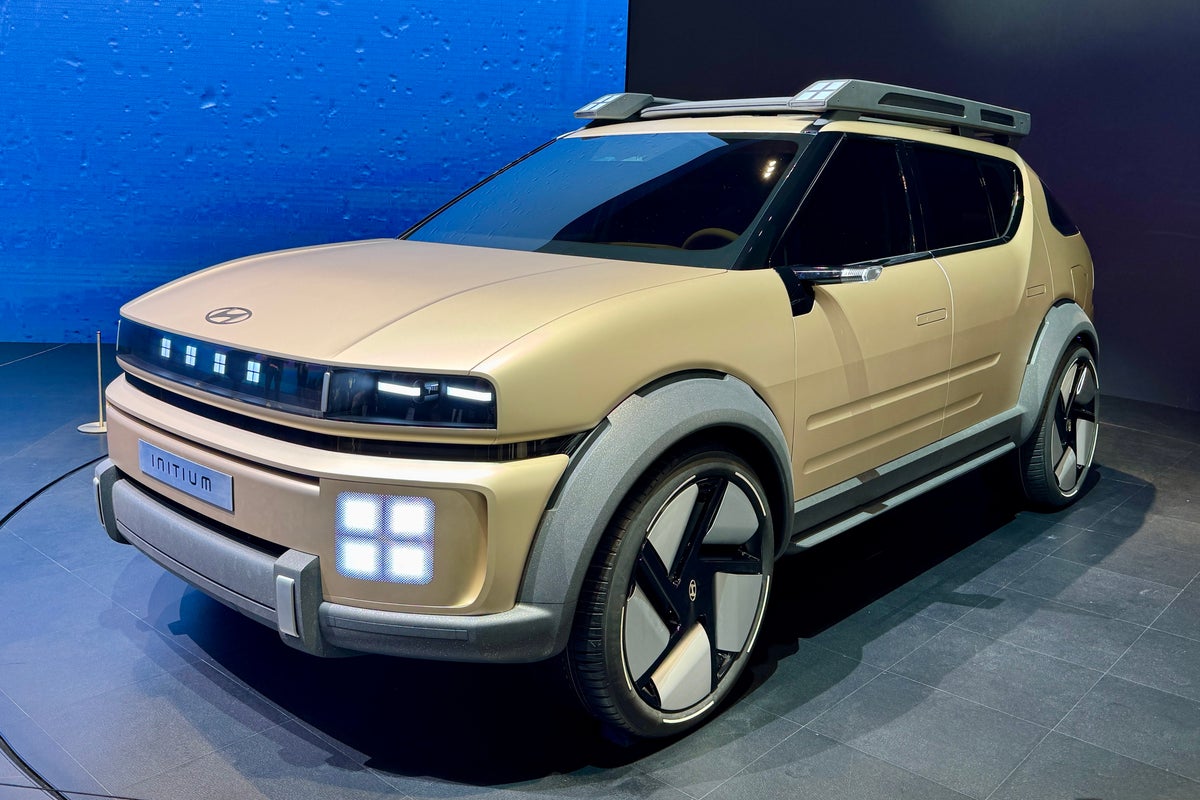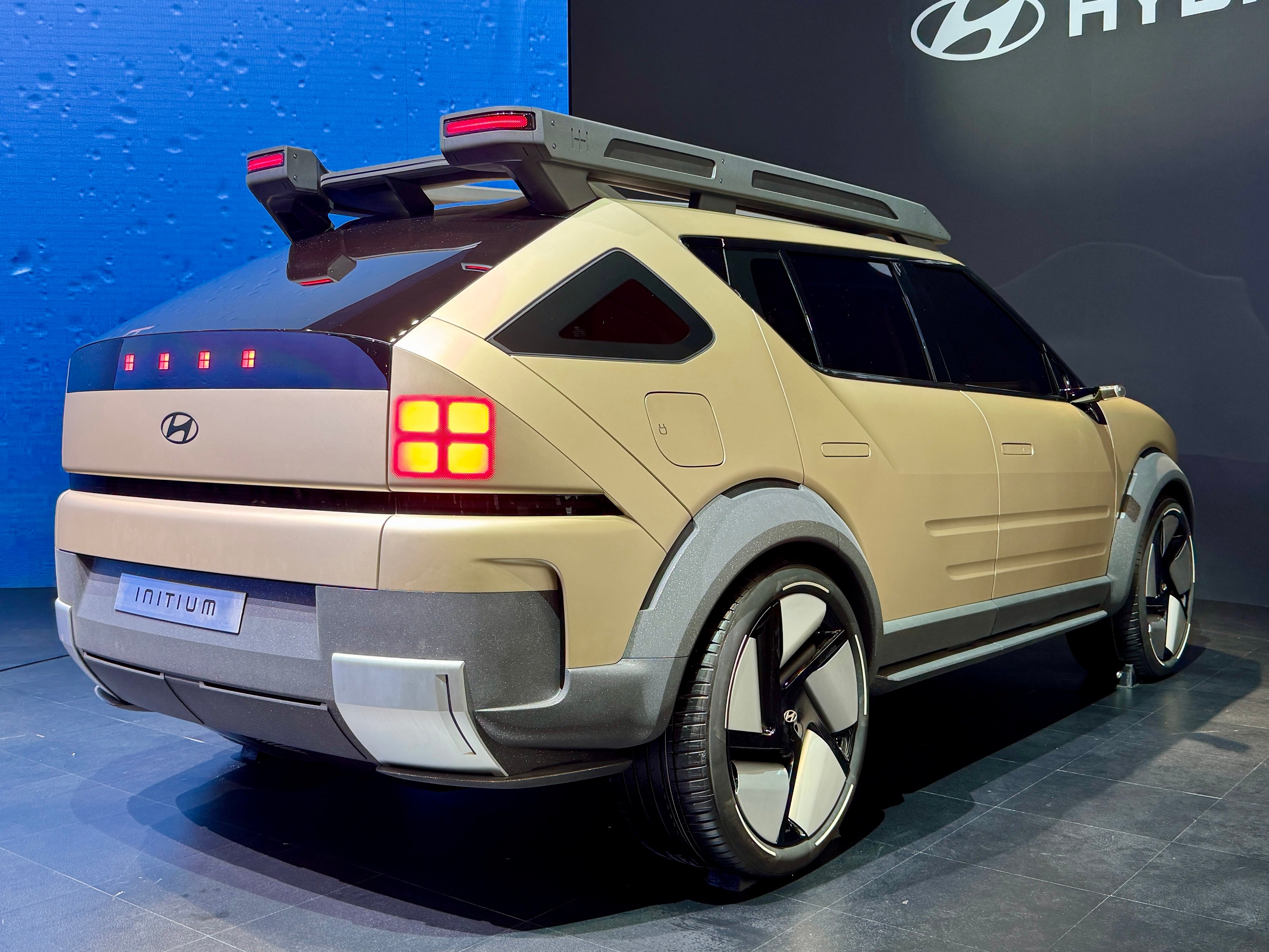
New Hyundai models are set to get a whole new look, previewed by the brand’s latest concept car called Initium.
The concept, revealed at an event in Hyundai’s home city of Seoul, South Korea, shows off Hyundai’s new Art of Steel design language, while also showcasing the brand’s commitment to hydrogen fuel cell technology.
Hyundai design boss SangYup Lee explained Art of Steel by saying: “Our challenge began from the manufacturing stage, where we pushed the formability of steel to the extreme to create a form of art. With Initium, we’ve crafted a more SUV-like design that is both solid and safe, reflecting our dedication to our customers through ‘customer-centric design’.”
The concept’s styling is said to integrate the HTWO symbol, representing Hyundai vision for a future driven by hydrogen fuel. The lighting signature features a ‘+’ inspired graphic that blends with the bumper to creating a specific look that will be unique to Hyundai’s next Fuel Cell Electric Vehicle (FCEV) that is set to replace the current Nexo model.

Hydrogen-powered fuel cell electric vehicles work by mixing hydrogen with air, then pumping it into a fuel cell where a chemical reaction splits the hydrogen into electrons and protons. The electrons are used to create electricity, which then charges a battery that powers an electric motor, feeding power to the wheels. The only bi-product comes when the protons are combined with oxygen from the air to produce water vapour.
Hyundai has been one of a few car makers pioneering the use of hydrogen, primarily for use in trucks and buses where the extra range and ease of refueling it offers over battery electric power make some sense. However, FCEV passenger cars have always been expensive (the Nexo FCEV’s list price is just short of £70,000) and suffer from a lack of hydrogen filling infrastructure – there are currently just 16 places where you can fill a car with hydrogen in the UK.
The Initium concept – its name comes from the Latin for beginning or first – uses advancements in FCEV technology to boost range and performance. It’ll go over 400 miles between fill-ups, which take a matter of minutes if you can find a hydrogen filling station, while performance is improved over previous FCEV models with around 200bhp.
The Initium’s interior also boosts usability over the Nexo FCEV, making it more suitable as everyday family transport. It also features an FCEV-specific route planner to help users find one of the elusive hydrogen filling stations, while V2L Vehicle-to-Load technology will enable the Initium to power external electrical devices or even power your whole house.
Speaking to the Independent at the launch event in Seoul, Jin Han Jung, Hyundai’s head of technical development, assured us that prices of FCEVs would be coming down, while the reliability of the complex systems will improve, too. “We know how to deal with the complexity,” he said, “And we will make every effort to reduce costs. Ultimately it will become more accessible, durability is improving and power is being raised.”
After the concept’s debut in Korea, the Initium will be on show at the Los Angeles Auto Show and Auto Guangzhou during November, before a production version is set to go on sale in the first half of 2025.







